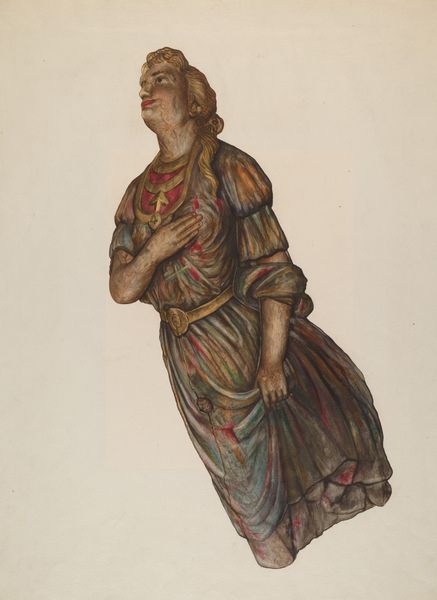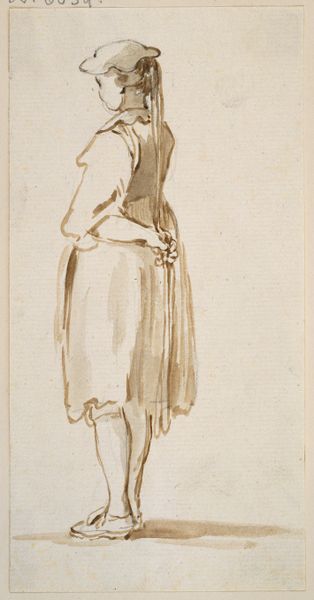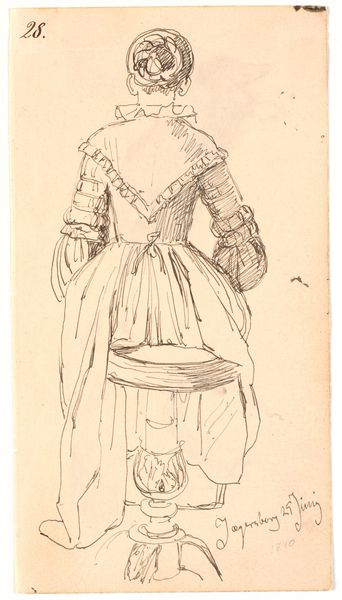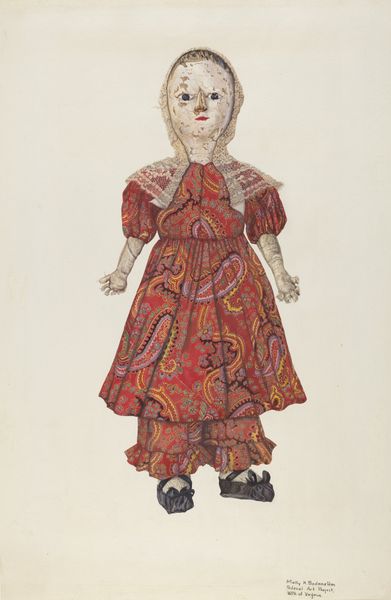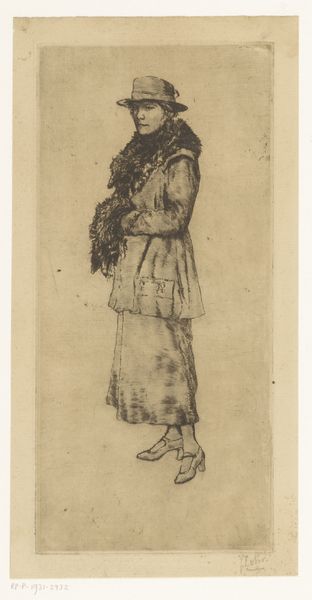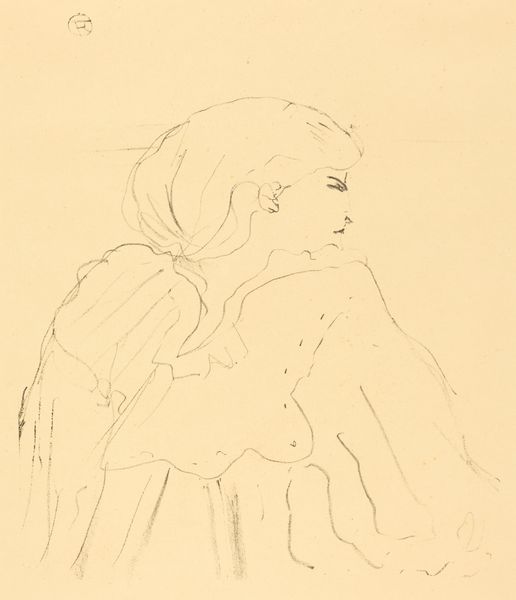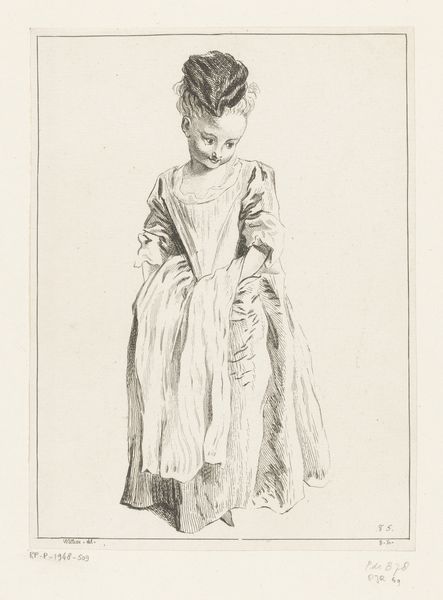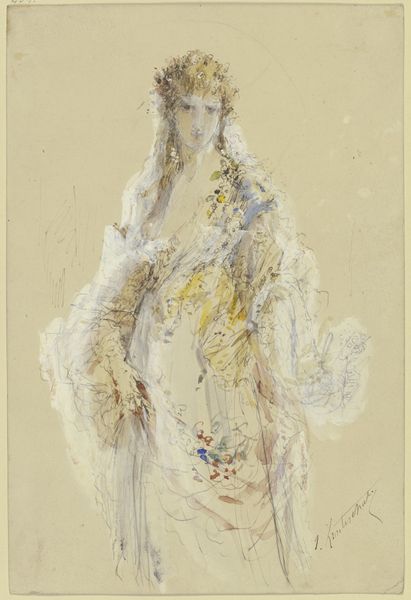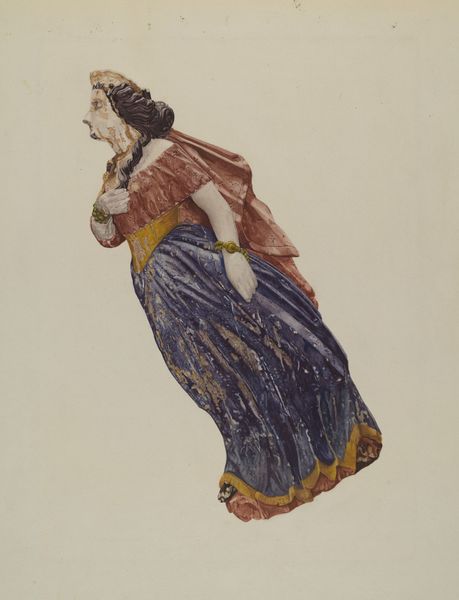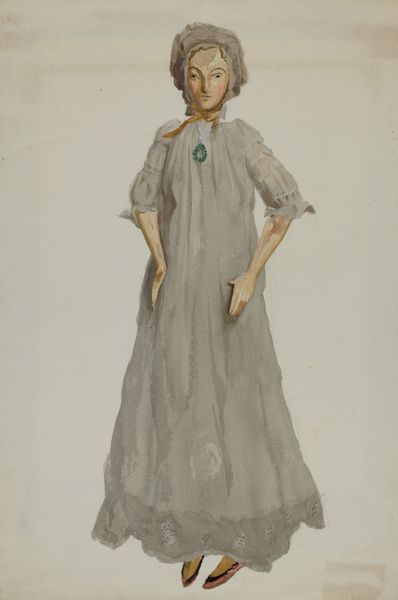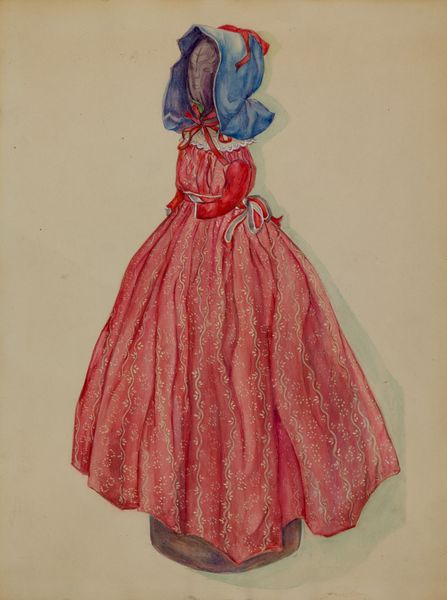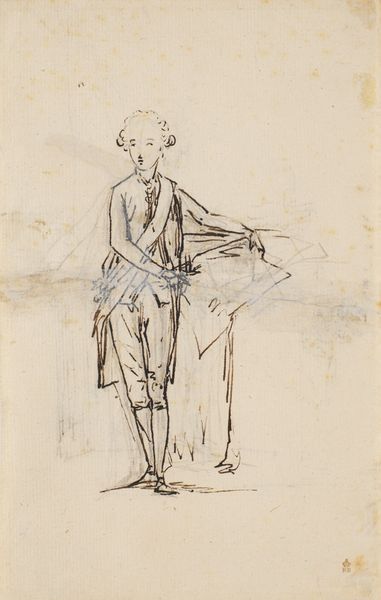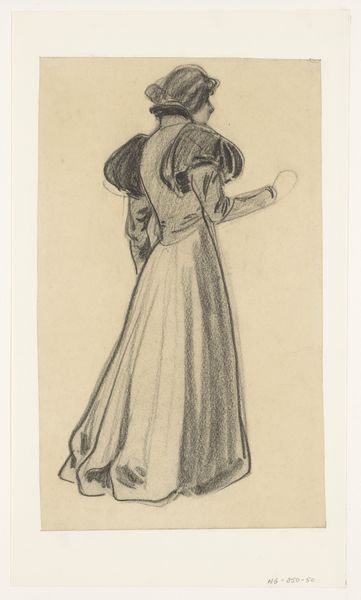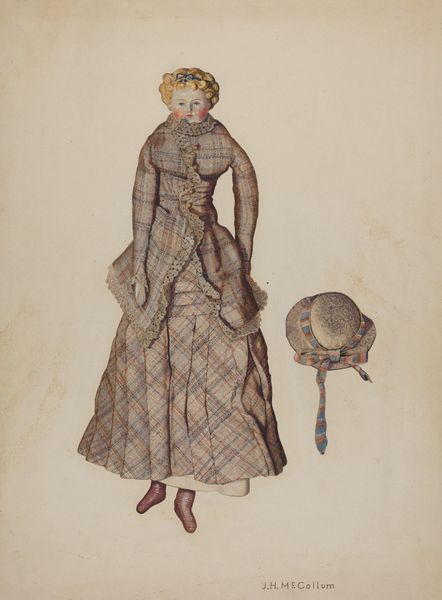
drawing, coloured-pencil, watercolor
#
portrait
#
drawing
#
coloured-pencil
#
charcoal drawing
#
figuration
#
oil painting
#
watercolor
#
coloured pencil
#
watercolour illustration
#
watercolor
Dimensions: overall: 50.4 x 32.5 cm (19 13/16 x 12 13/16 in.) Original IAD Object: 63"finger/toe 52"head/toe 19"wide(at skirt) 5 1/2"deep(at knee)
Copyright: National Gallery of Art: CC0 1.0
Curator: What a curious piece. We’re looking at "Circus Wagon Figure: Dancing Girl," dating back to around 1938. It appears to be a drawing rendered in coloured pencil and watercolor. Editor: It’s haunting, almost. The textures, especially the imitation of wood grain, make her feel both delicate and weathered. The colors are muted, lending an air of melancholy. Curator: It's a portrait of an object, in a way. Consider the materials implied: carved wood, the likely original medium of the sculpture itself, translated here through layered applications of color and graphite on paper. What does it mean to create a representation of a representation, almost twice removed from any original, corporeal form? Editor: I find myself questioning the romanticized image of circus life often presented. Was the life of a “dancing girl” truly one of freedom and joy, or one of exploitation and confinement? Her pose, though dynamic, also suggests a sort of performed gaiety, a manufactured image. There’s a profound lack of agency apparent. Curator: The means of production—the repetitive carving, the likely industrial nature of the circus wagon decoration—speak volumes. This wasn’t high art, it was a craft intended to adorn and attract, possibly created in large quantities by underpaid artisans. It’s interesting to view the act of documenting folk art objects such as this as preservation; elevating an overlooked cultural object into "high art." Editor: Exactly, the very act of depicting it gives value. Let’s remember the historical context – 1938 was a time of great social and economic upheaval. How might this piece speak to themes of labor, performance, and the objectification of the human form within systems of entertainment and economic hardship? What societal values are being projected, and potentially challenged, in representing such a figure? Curator: Food for thought, absolutely. Seeing it now, through that lens of economic struggle during its time, casts a totally new shadow. Editor: Precisely. This piece acts as an intersectional window into discussions around class, gender, and the construction of public spectacle. Curator: Yes. I’ve learned something new. The piece definitely presents unexpected viewpoints when we look at the materials and process surrounding it. Editor: Indeed. I believe a critical investigation can expose hidden meanings. Art can stimulate conversations about complex subjects like exploitation and identity.
Comments
No comments
Be the first to comment and join the conversation on the ultimate creative platform.
